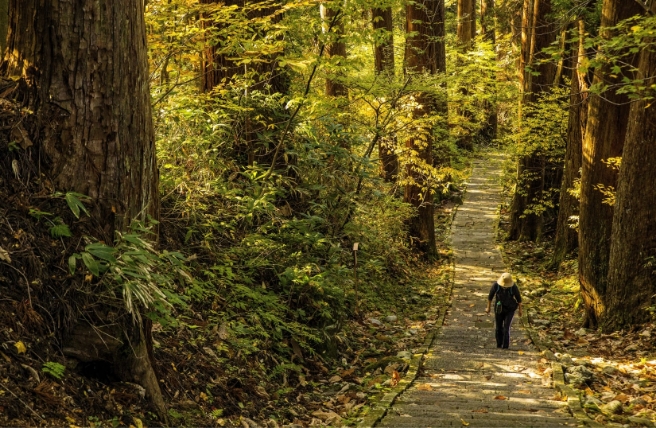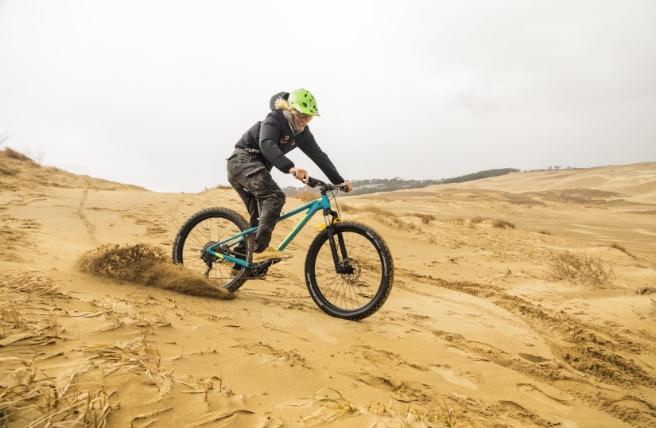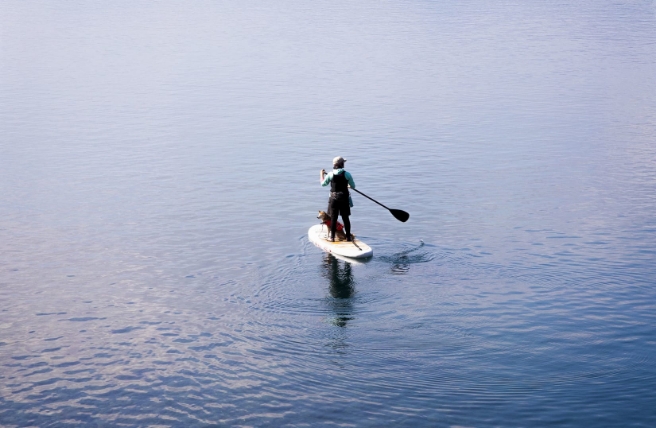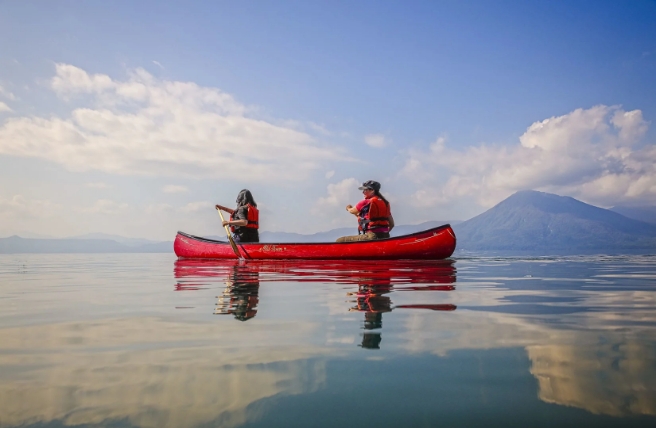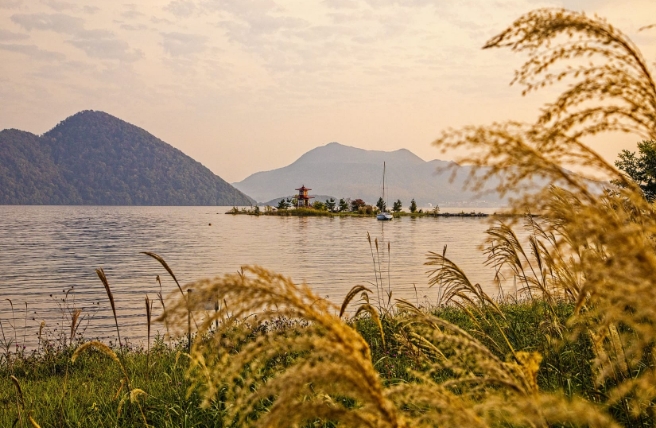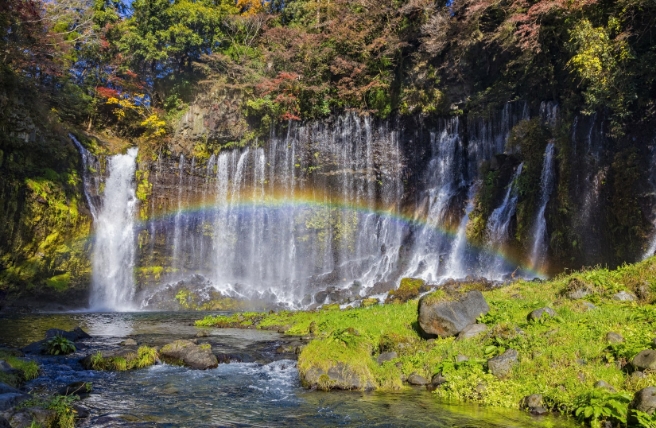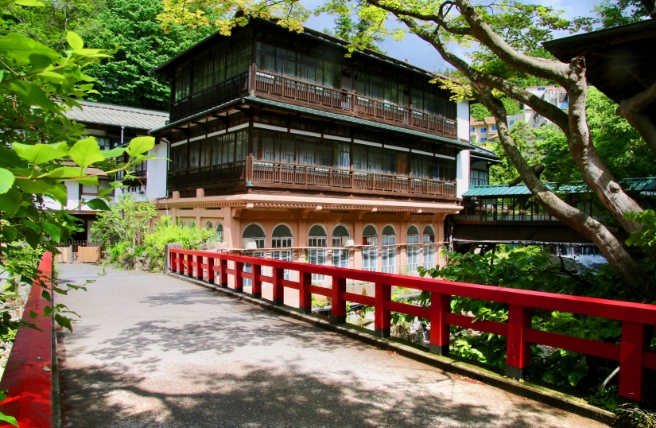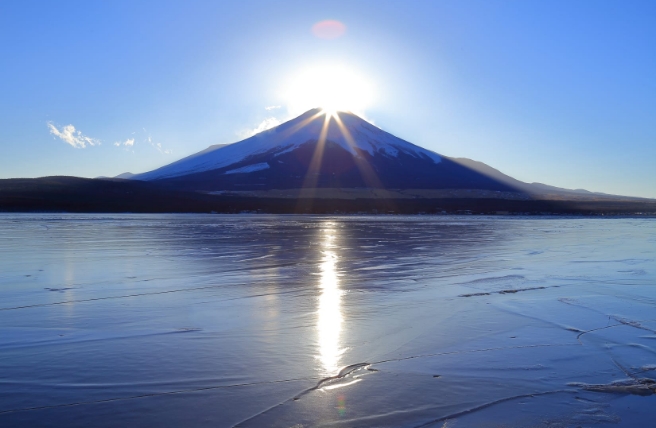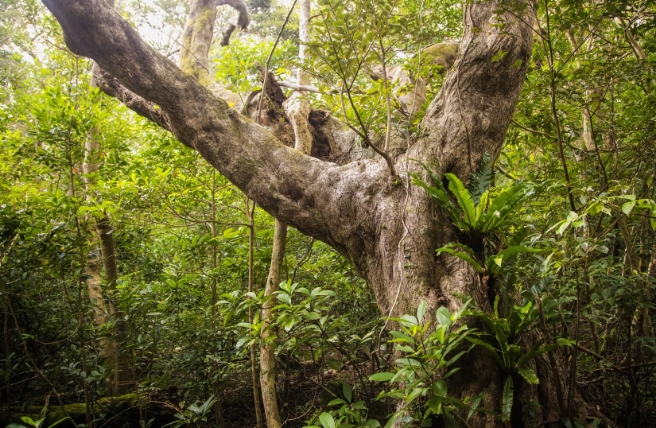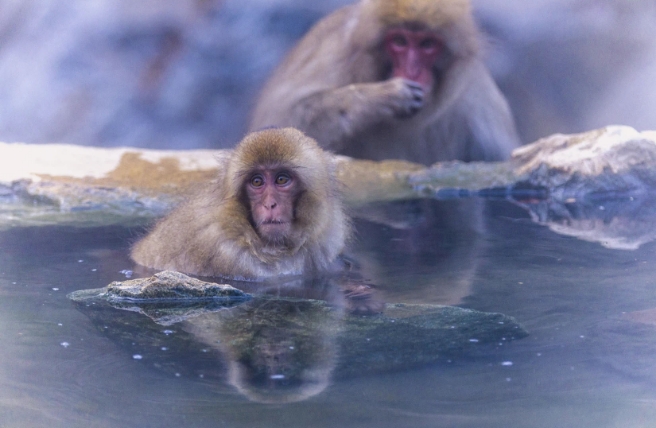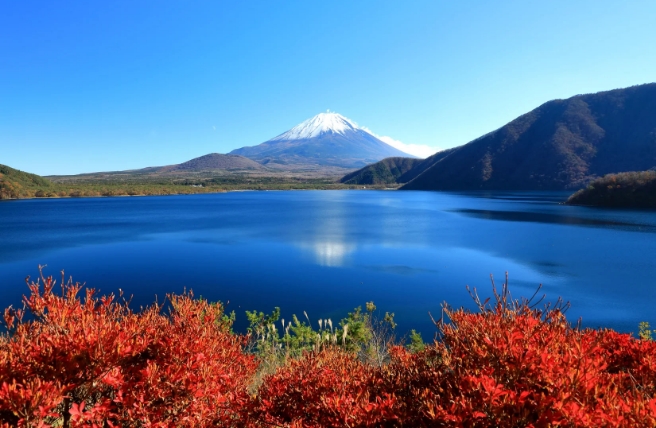
The islands of Japan’s national parks can be enjoyed in a variety of ways
Island hopping & coastal cruises
Setonaikai National Park encompasses many islands in the Seto Inland Sea, from Awaji Island in the east to Himeshima in the west. Ferries and sightseeing excursions connect the islands from popular destinations like Hiroshima. Join a five-hour sightseeing cruise on the “Sea Spica” to visit port towns and islands between Hiroshima and Mihara. Shorter excursions include trips to the Kurushima Strait whirlpools and Oshima Island, where you can explore a fort from the Russo-Japanese War.
To explore at a more leisurely pace, charter a catamaran for a private, three-day tour, with highlights including an art tour to Naoshima and Teshima, and a visit to a traditional soy sauce manufacturer on Shodoshima. Alternatively, go island-hopping by bicycle on the 70-kilometer Shimanami Kaido which runs between Hiroshima and Ehime, linking Honshu and Shikoku via several small islands including Oshima.
Daisen-Oki National Park, off the Sea of Japan coast, has sightseeing boat trips to explore geological formations and observe the coastal environment. One such trip takes you along the Kuniga Coast, passing sea caverns, sheer cliffs, and sea arches. On a similar excursion at sunset, you can watch the setting sun appear to light the top of a rock formation eroded to resemble a candle.

The aptly named Rosokujima (Candle Island)
Island hikes
South of Kyushu is Yakushima National Park, famous for its ancient cedar forests. Follow hiking trails to the heart of the island to see trees which are thousands of years old, and learn about the unique ecosystem at the Yakushima World Heritage Conservation Center.
Saikai National Park covers parts of northwestern Kyushu and includes the subtropical Goto Islands. You can learn more about the development of the archipelago’s culture and landscapes by joining a guided hike up the grassy mountainside of conical Mount Onidake on Fukuejima Island or along the volcanic sea cliffs of Saganoshima Island. These and other landforms in the southern part of the archipelago are also part of the Goto Islands (Shimogoto Area) Geopark.
The two islands of Rishiri and Rebun in Hokkaido’s Rishiri-Rebun-Sarobetsu National Park are well-known trekking destinations. On a three-day trip you can follow boardwalks through the wetlands of Sarobetsu Plain on the Hokkaido mainland, visit Rishiri Island to walk around the scenic Lake Himenuma bird sanctuary, and hike along the dramatic clifftops of Rebun Island. Rebun is famed for its alpine flora, and many guided treks include wildflower-tailored courses.
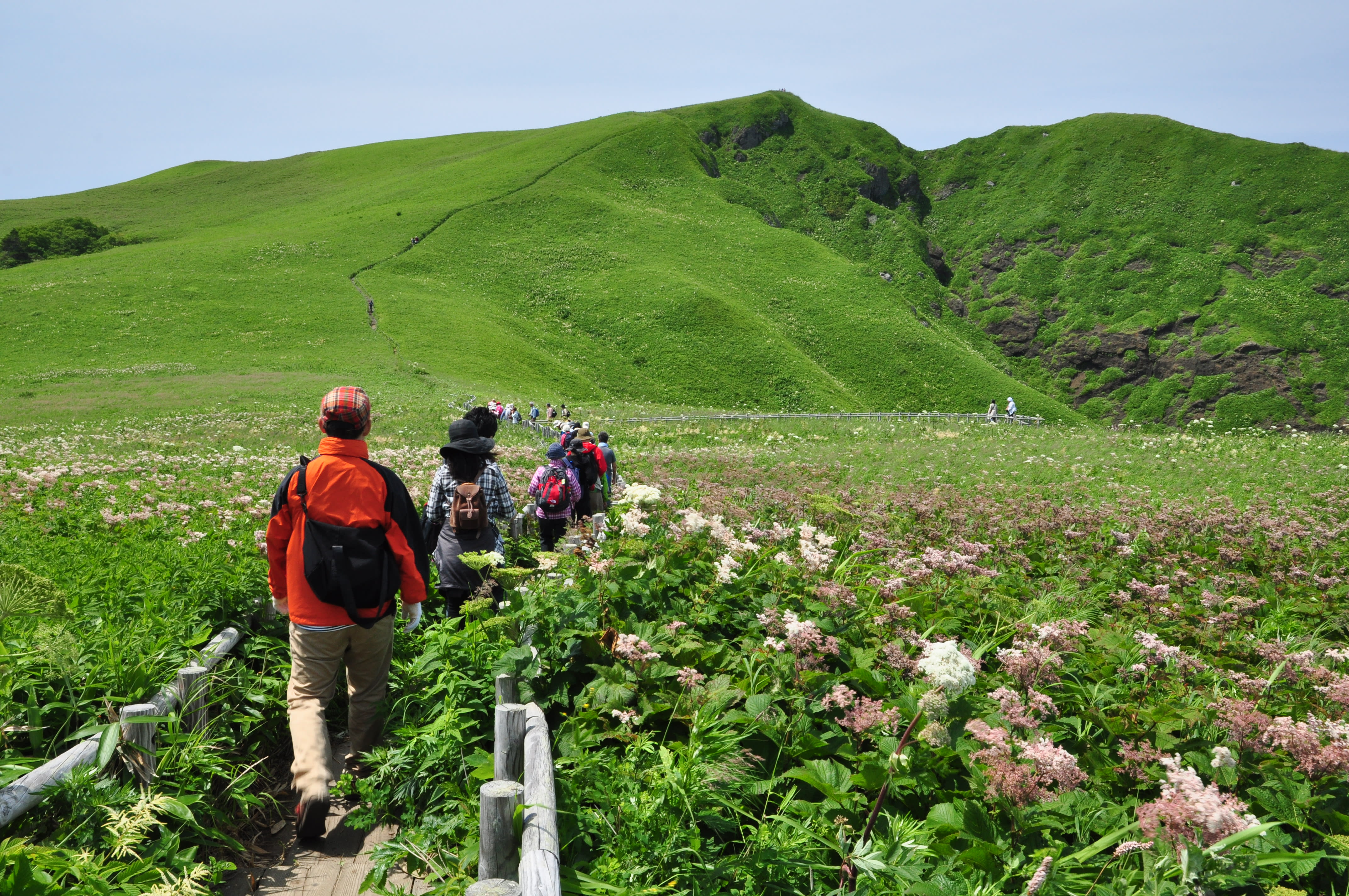
Rebun Island is home to approximately 300 species of flowering alpine plants
Wildlife tours
Japan’s national parks cover a huge range of habitats and ecosystems and offer diverse opportunities for spotting wildlife.
In Japan’s far south, the subtropical archipelago of Okinawa Prefecture is home to Keramashoto National Park. Kayak or paddleboard out into the “Kerama Blue” waters of the park to see fish, turtles, and other marine life. To get even closer, join a guide to snorkel around the coral reefs. Between late December and early April, you can join whale-watching boat trips where you might see migrating humpbacks with their young.
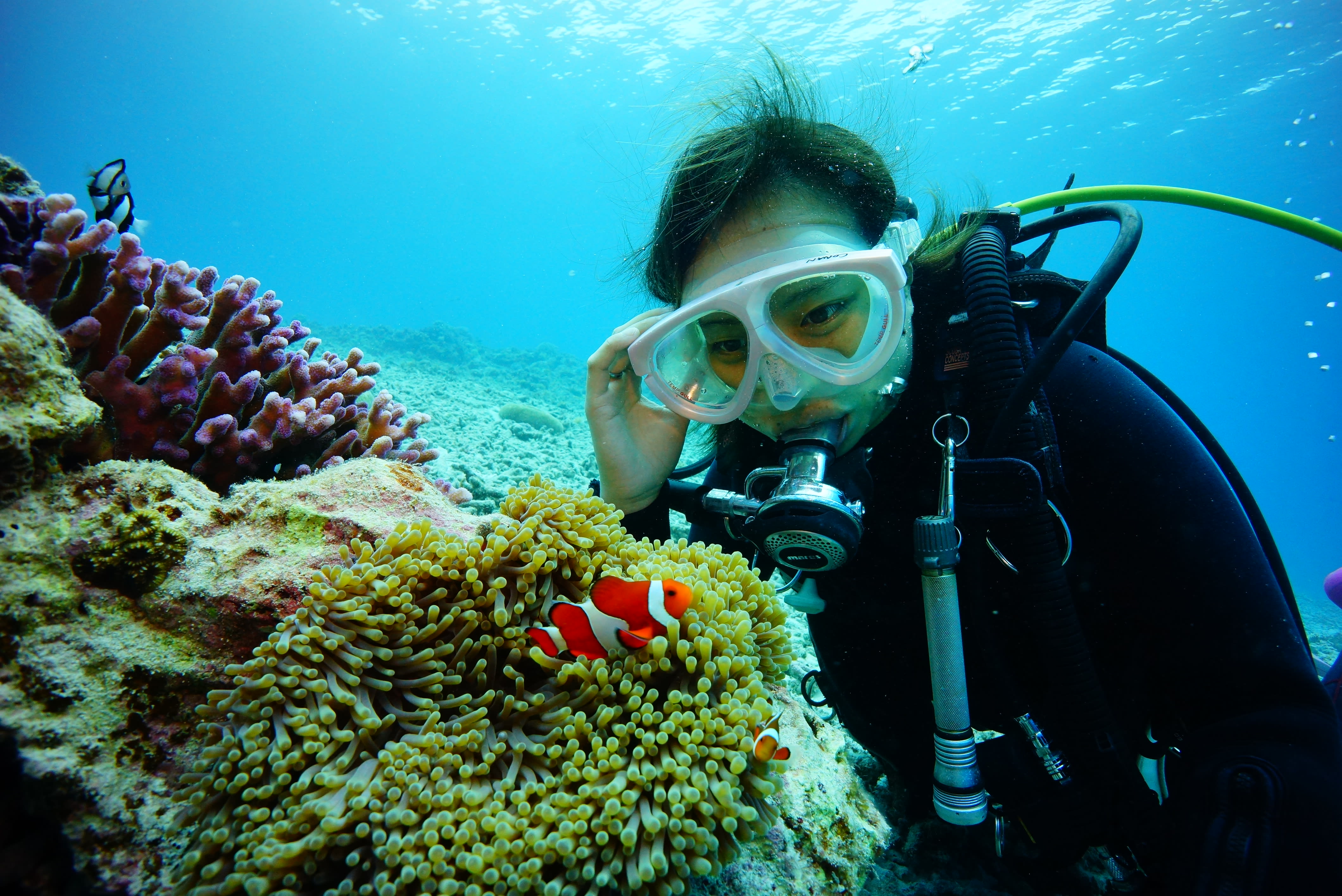
Diving tours are a great way to explore the coral reefs
Exploring nature
The natural landscapes of Japan’s islands encompass much more than beaches: in Amamigunto National Park, south of Kyushu, you can experience everything from primeval woodlands to mangroves; and Okinoerabujima Island has sacred limestone caves, which you can explore with a guide, as well as coral reefs and rock pools. Plan a minimum three-day trip to Okinoerabujima Island to explore the forests, caves, and underwater environment of the island.
The Oki Islands in Daisen-Oki National Park are home to fascinating wildlife, such as the Oki hare, and a mysterious mix of flora which includes plants found in both Okinawa and Hokkaido. Immerse yourself in its unique nature, with guided trips including an eco-tour of the Oki Jungle and kayaking tours past sea caves.

Paddling through tunnels of mangroves in Amamigunto
Island life
Located some 60 kilometers from Honshu’s Sea of Japan coast, the remote Oki Islands were once a place of exile for aristocrats and even emperors. As a result, the archipelago developed unique cultures and customs found nowhere else in Japan. You can experience it today through events like Oki Traditional Sumo wrestling and Kagura dance performances, and go on a gastronomic tour to try local specialties which include seafood, beef and soba noodles.
Oysters are a famous menu item in parts of Setonaikai National Park, and oyster farming is a major industry in Hiroshima Prefecture. Learn about how they’re cultivated on an oyster-raft tour of Hiroshima Bay or feast on oyster dishes and admire Itsukushima-jinja Shrine’s famous red torii gate from the water.

See the famous torii gate of Itsukushima-jinja Shrine from a novel angle
Camping & glamping
Many of the islands in Japan’s national parks have permitted areas for camping. Some have simple spots where you can pitch your own tent, while others have cabins or pre-erected dome tents.
In Keramashoto National Park, Tokashiki Village Campgrounds makes for a good base for those planning to enjoy Aharen Beach or explore the island’s hiking trails. On neighboring Zamamijima Island, you can set up your own tent or stay in a wood cabin at Ama Beach Campgrounds. Both are excellent options for stargazing thanks to the low levels of light pollution.
Kujirajima in Setonaikai National Park is a small island, where one group per day can enjoy a comfortable stay in a luxurious cottage, dome tent, or bell tent. There are also activities that range from kayaking to a tent sauna, in which water is heated over firewood inside a specially insulated tent.
Sports & marine activities
It’s easy to get active in Japan’s national parks. Cycling is a great way to explore, especially on the smaller islands. You can navigate the hilly terrain of the Oki Islands in Daisen-Oki National Park easily on an e-bike. In Saikai National Park, the Goto Islands have routes and bicycle rentals for cyclists of all levels.
Fishing is an obvious choice: from fishing tours of the Goto Islands to jig fishing adventures in Rishiri-Rebun-Sarobetsu National Park where you might catch anything from mackerel to yellowtail.
There are plenty of other marine activities besides fishing. Unzen-Amakusa National Park, southwest of Kyushu, includes some 120 small islands that can be explored on kayak and SUP tours. In Setonaikai National Park, sea kayaking tours offer a different angle from which to admire the famous red torii of Itsukushima-jinja Shrine on Miyajima.
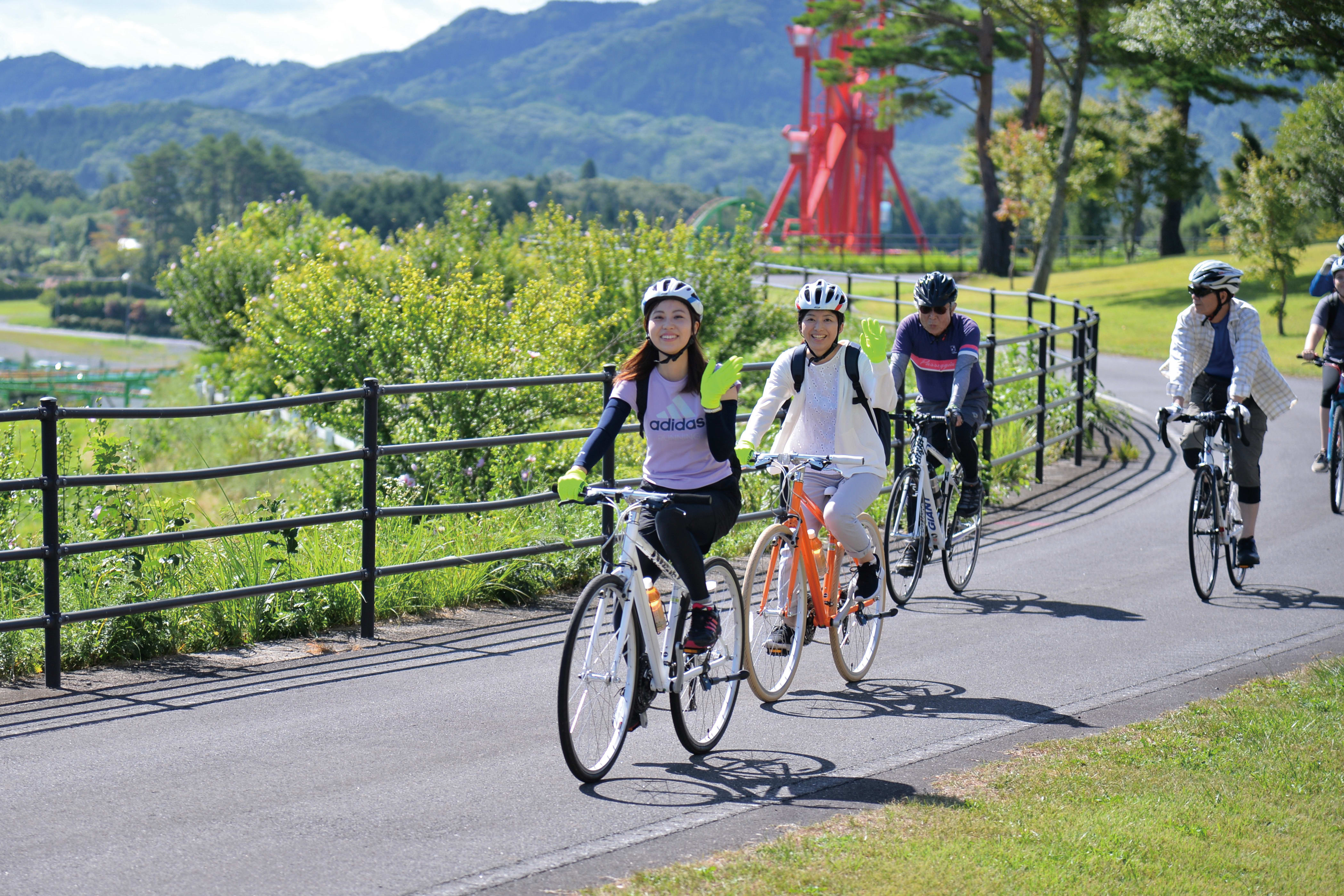
Cycling is a popular way to explore Japan’s national parks
Beach bliss
Japan’s national parks have a diverse range of beautiful beaches, from subtropical white-sand strands to rocky coves. They offer much more than just opportunities to relax in the sun, with varied scenery and ecology that offer activities from clifftop walks to snorkeling.
Okinawa’s Keramashoto National Park is a good example, encompassing several islands with noteworthy beaches. On Tokashikijima you can stargaze while enjoying a barbecue at Aharen Beach or enjoy the water at designated swimming beaches like Tokashiku.
Akajima’s Nishibama Beach is great for relaxing, with waters full of tropical fish. A scenic walking trail links the island to neighboring Gerumajima.

Aharen Beach is one of many beautiful beaches in Okinawa
Art islands
In recent years, several islands in the Seto Inland Sea have become known collectively as the Art Islands, due to an ambitious revitalization project in the 1980s. Art and architecture was used to transform them into a hub for creativity, with museums, galleries, installation artworks, and residency programs to attract tourists and new residents.
Even if you can’t visit during the Setouchi Triennale, a major contemporary art festival held every three years, there are many permanent pieces to see by artists including Yayoi Kusama, David Hockney and Yukinori Yanagi. Volunteers run guided trips, introducing you to the artworks and the community more broadly. You can also book a private catamaran tour of the islands, to admire the coastal scenery, architecture, and outdoor installations from the water.
